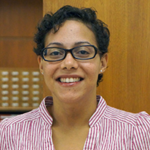Program History
CLIR provides the original proposal for the program submitted by CLIR to The Andrew W. Mellon Foundation as a pdf file.
Audio and audiovisual recordings document vital, irreplaceable aspects of twentieth and twenty-first century life, but substantial proportions of this legacy will be lost due to the fragility and obsolescence of audio and audiovisual media. For more than 20 years, CLIR has partnered with organizations to help raise awareness about the legal and practical threats to audio and audiovisual content through several key publications, including The Library of Congress National Recording Preservation Plan, the ARSC Guide to Audio Preservation, and The Survival of American Silent Feature Films: 1912-1929 (a full listing of CLIR’s publications is available online). These studies have shown that broadening professional awareness of these challenges, setting clear priorities for action, and making substantial investments in reformatting will be necessary to ensure this content will be available to future generations.
If current professionals fail to act, vast quantities of audio and audiovisual content will remain inaccessible, be poorly understood, and ultimately be lost. Proper storage and handling can prolong the life of fragile recordings, but these practices serve as mere stopgaps, postponing inevitable decay. Even in cases where media have been preserved, changes in formats and playback technologies over time will render them unusable.
Digital reformatting is currently the most practical solution for ensuring the survival and utility of recorded content in fragile, obsolete cylinders, discs, and magnetic tapes. Identifying top priorities for digitization of rare and unique recordings, as well as setting appropriate standards for the preservation of audio and audiovisual content in digital form, are therefore of paramount importance for the current generation of cultural and information workers.
Lack of resources and expertise often prevent collecting institutions from developing audio and audiovisual preservation reformatting projects that would ensure the survival of the valuable audio and audiovisual media in their care. By offering a temporary boost over financial hurdles, CLIR aspires to assist institutions in surmounting these barriers. Through the Recordings at Risk regranting program, CLIR encourages professionals working in a variety of contexts to identify institutional priorities for digital reformatting, to establish good working relationships with partners who will help them undertake this work responsibly and efficiently, and to raise awareness of best practices for the description, storage, and maintenance of digitized audio and audiovisual content.
As its name suggests, Recordings at Risk prioritizes long-term preservation of content over immediate, comprehensive access. This emphasis differentiates this program from CLIR’s broader digitization initiative, Digitizing Hidden Special Collections and Archives. There are two primary reasons for this:
- in 2015 preservationists estimated that only ten to fifteen years remained before the degradation and obsolescence of physical carriers leads to the permanent loss of audio and audiovisual content; and
- substantial proportions of the content reformatted through Recordings at Risk are likely to remain protected by copyright beyond the usable life-span of their original carriers.
Funded Projects to Date
In early 2017, CLIR launched a pilot competition for the digitization of magnetic audio media in partnership with the Northeast Document Conservation Center (NEDCC), followed by subsequent open calls for audio and audiovisual digitization through any service provider. Since the pilot call, funds totaling more than $5.1 million have been awarded to 164 projects over ten application cycles. In 2023, the Mellon Foundation renewed the program, providing funding that will enable the program to operate into 2025.
Applicants for future calls should consult the Apply for an Award page for current information about important dates, application content, and the review process.





